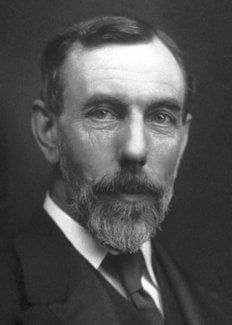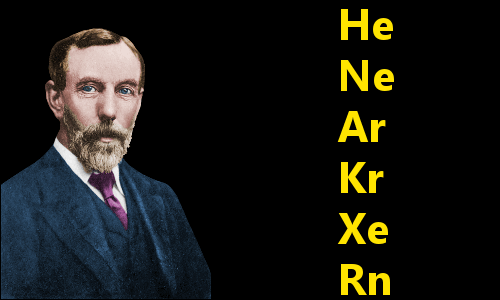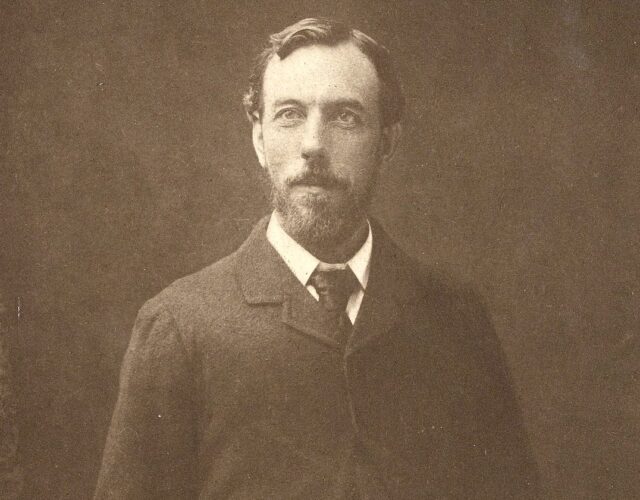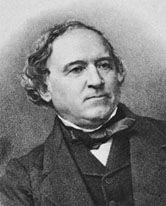William Ramsay: The Pioneering Chemist Who Discovered the Noble Gases
Early Life and Education
William Ramsay was born on October 2, 1852, in Glasgow, Scotland. His father was a civil engineer and his mother came from a family with strong scientific interests. This environment fostered Ramsay's early curiosity about the natural world. He attended the University of Glasgow at the remarkably young age of 14, where he initially studied classics before switching to chemistry.
After completing his studies in Glasgow, Ramsay traveled to Germany to work under Rudolf Fittig at the University of Tübingen, where he earned his doctorate in 1872 with a thesis on orthotoluic acid and its derivatives. This German education exposed him to the rigorous experimental techniques that would characterize his later work.
Academic Career and Early Research
Ramsay returned to Scotland in 1874, taking a position at Anderson College in Glasgow (now part of the University of Strathclyde). He later moved to University College, Bristol, where he became Professor of Chemistry in 1880 and Principal in 1881. In 1887, he accepted the prestigious position of Chair of Inorganic Chemistry at University College London, where he would make his most significant discoveries.
His early research focused on organic chemistry, particularly pyridine and related compounds. However, Ramsay's interests gradually shifted toward physical and inorganic chemistry, setting the stage for his groundbreaking work on atmospheric gases.
The Discovery of Argon
Ramsay's most famous achievement began in 1894 when he collaborated with physicist Lord Rayleigh to investigate a puzzling discrepancy in the density of nitrogen. Rayleigh had noticed that nitrogen extracted from the air was slightly denser than nitrogen obtained from chemical compounds. Ramsay hypothesized that atmospheric nitrogen might contain an unknown heavier gas.
Through meticulous experimentation, Ramsay isolated a new element that was chemically inert - it didn't react with other elements. He named it "argon" from the Greek word "argos" meaning "lazy" or "inactive." This discovery challenged the existing understanding of chemical elements and their classification.
Expanding the Periodic Table: The Noble Gases
Building on his discovery of argon, Ramsay began searching for other unknown atmospheric gases. His systematic approach led to a series of remarkable discoveries:
1. Helium (1895): Ramsay was the first to isolate helium on Earth, confirming its existence in our atmosphere. Previously, it had only been observed in the sun's spectrum.
2. Krypton, Neon, and Xenon (1898): Working with Morris Travers, Ramsay used fractional distillation of liquid air to separate and identify these three new elements.
3. Radon (1900): Ramsay identified the last of the noble gases, initially called "niton," while studying radioactive decay.
These discoveries filled an entire new group in the periodic table - Group 18, now known as the noble gases. Ramsay's work fundamentally changed our understanding of the chemical elements and their relationships.
Would you like me to continue with the next section of the article? I can expand on Ramsay's later work, his Nobel Prize, the impact of his discoveries, and his personal life when you're ready for the next 1200-word section.
Reactions to the Discovery of Noble Gases and Scientific Impact
The scientific community initially met Ramsay's discoveries with skepticism. Many chemists found it difficult to accept the existence of elements that refused to participate in chemical reactions, contradicting the prevailing understanding of matter. The inertness of these gases challenged fundamental chemical theories and necessitated a reevaluation of the periodic table.
Dmitri Mendeleev, creator of the periodic table, initially questioned whether these substances deserved classification as elements, as they didn't fit neatly into his system. However, Ramsay's meticulous experimental evidence and repeated verification of results eventually convinced the scientific world. His work led to the addition of an entirely new group to the periodic table, expanding it beyond what Mendeleev had originally envisioned.
Ramsay's Nobel Prize and Later Research
In 1904, Ramsay was awarded the Nobel Prize in Chemistry "in recognition of his services in the discovery of the inert gaseous elements in air, and his determination of their place in the periodic system." This recognition came remarkably quickly after his discoveries, highlighting their profound significance. In the same year, Lord Rayleigh received the Nobel Prize in Physics for his related work on argon, making them the only pair to receive Nobel Prizes in different fields for the same discovery.
After his noble gas discoveries, Ramsay turned his attention to radioactivity. He demonstrated that helium was produced during radioactive decay of radium, providing crucial evidence supporting theories about atomic transmutation. This work helped establish the field of radiochemistry. Ramsay also investigated the atomic weight of radium and worked on determining the density of gases at extremely high temperatures.
Teaching and Mentorship
Beyond his research, Ramsay was a dedicated educator who inspired generations of chemists. His teaching methods were innovative for the time, emphasizing hands-on laboratory work and encouraging students to question established ideas. Many of his students went on to make significant contributions to chemistry, including:
- Morris Travers, his collaborator on the noble gas discoveries
- Frederick Soddy, who would later win the Nobel Prize for his work on isotopes
- William Pope, who became a pioneer in stereochemistry
Ramsay's approach to teaching chemistry as an experimental science, rather than just a theoretical discipline, influenced the modernization of chemical education in Britain. He was particularly passionate about making science accessible, often giving public lectures to spread scientific knowledge beyond academic circles.
Technological Applications and Legacy
The noble gases Ramsay discovered found surprisingly diverse applications, often years after their initial identification:
1. **Helium* Initially a scientific curiosity, helium became crucial for airships, deep-sea diving mixtures, and later in cryogenics and MRI machines. Its use in balloons came later, replacing flammable hydrogen.
2. **Neon* Found its most visible application in neon lighting, revolutionizing advertising and urban illumination in the early 20th century.
3. **Argon* Now widely used in lighting (including ordinary light bulbs), welding, and as a protective atmosphere in metallurgy and semiconductor manufacturing.
4. **Xenon and Krypton* Used in specialized lighting, medical imaging, and space propulsion systems.
Ramsay's isolation techniques for these gases laid the foundation for the modern industrial gas industry. His work also had philosophical implications, demonstrating that science could reveal fundamental aspects of nature that were completely unknown and unsuspected.
Ramsay's Scientific Methodology
Ramsay's success stemmed from his careful, methodical approach to experimentation. Some key aspects of his methodology included:
1. **Attention to Purity* He developed rigorous methods to ensure gas samples were free from contamination, crucial for detecting trace components in air.
2. **Precision Measurement* His careful density measurements were central to identifying new elements.
3. **Interdisciplinary Collaboration* Working with physicists like Rayleigh demonstrated the value of crossing traditional scientific boundaries.
4. **Persistence* He often repeated experiments dozens of times to verify results, unwilling to accept conventional explanations for anomalies.
Perhaps most importantly, Ramsay demonstrated how careful observation of small discrepancies could lead to major discoveries. The density difference that led to argon's discovery was less than 1%, yet it revealed an entire new class of elements.
Would you like me to continue with the third and final section of the article? I can cover Ramsay's later life, personal characteristics, posthumous recognition, and the lasting impact of his discoveries on modern science.
Personal Life and Character
William Ramsay was known not just for his scientific brilliance but also for his colorful personality. A man of wide interests, he spoke fluent German and French, enjoyed music, and was an avid traveler. His wife, Margaret Buchanan, whom he married in 1881, was a constant support throughout his career. They had two children, Catherine and William George, who both pursued scientific careers to some degree.
Colleagues described Ramsay as enthusiastic, generous with his time, and possessing a dry sense of humor. He maintained an extensive correspondence with scientists worldwide, demonstrating his collaborative spirit. Despite his eminence, he remained approachable to students, often inviting them to his home for discussions that would extend late into the night.
One notable trait was Ramsay's perseverance in the face of skepticism. When criticized about his inert gas discoveries, he reportedly quipped, "The discoverer of a new phenomenon must be prepared to be disregarded or contradicted." This determination characterized his career—he once spent weeks meticulously distilling liters of air to isolate just a few cubic centimeters of rare gases.
Later Years and Final Scientific Contributions
In his final research years, Ramsay turned to more speculative investigations:
1. **Attempts at Element Transformation* Fascinated by radioactivity, he experimented with converting copper into lithium—an idea rejected by contemporaries but intriguing in light of later nuclear physics.
2. **Geological Applications* He studied the composition of gases trapped in minerals, pioneering what would become geochemical analysis techniques.
3. **War-Related Research* During World War I, Ramsay contributed to chemical defense projects, though he remained conflicted about military applications of science.
His health began declining around 1912, forcing him to resign from University College London in 1913. Yet even in retirement, he continued writing and advising younger scientists until his death on July 23, 1916, from nasal cancer at age 63.
Posthumous Recognition and Honors
Ramsay received numerous accolades during his lifetime, but recognition continued growing after his death:
- **The Ramsay Memorial Fellowship** was established in 1920 to support chemical research
- **Element 86 (Radon)** was renamed emanium before settling on its current name, honoring Ramsay's radioactive gas work
- **Ramsay Hall** at University College London and several schools bear his name
- In 2019, the Royal Society of Chemistry created the William Ramsay Award for exceptional chemical achievement
Chemical landmarks related to his work have been preserved, including his original apparatus at several British institutions. Recent reappraisals highlight how his work bridged 19th-century chemistry and modern atomic theory.
Historical Context and Scientific Legacy
Ramsay's discoveries occurred during a revolutionary period in science:
1. **Periodic Table Evolution* His noble gases forced expansion of Mendeleev's system, showing its adaptability to new discoveries.
2. **Atomic Structure Insights* Noble gas stability later proved crucial in developing theories of electron shells and quantum mechanics.
3. **Analytical Chemistry Advances* His precise measurement techniques raised standards for chemical analysis.
Interestingly, Ramsay initially missed discovering radon's radioactive nature—a rare oversight that demonstrates even great scientists have blind spots. Later researchers built upon his foundation to uncover the full significance of noble gases in atomic theory.
The Modern Impact of Ramsay's Work
Today, noble gases underpin technologies Ramsay could scarcely imagine:
1. **Medical Applications* Helium in MRI machines, xenon in anesthesia, and radon (controlled) in cancer treatment
2. **Space Exploration* Ion propulsion systems using xenon enable deep-space probes
3. **Industrial Processes* Argon atmospheres prevent oxidation in metal production
4. **Scientific Research* Liquid helium cools superconducting magnets in particle accelerators
Beyond practical uses, Ramsay reshaped fundamental chemistry education. The modern periodic table always includes his noble gases as Group 18, teaching students about atomic periodicity and electron configuration patterns. His insistence on careful measurement remains a cornerstone of chemical pedagogy.
Ramsay's Place in Science History
Among British scientists, Ramsay ranks alongside contemporaries like J.J. Thomson and Ernest Rutherford. While less famous publicly, his methodical approach made him what historian J.R. Partington called "the last of the classical chemists"—bridging qualitative chemistry and modern physical chemistry.
Comparative studies show that:
• His discovery rate (five elements) has never been matched by a single individual
• The multiple applications of noble gases exceed those of many simultaneously discovered elements
• His interdisciplinary approach anticipated today's collaborative science
Ramsay's career illustrates how fundamental research—motivated by curiosity about minute anomalies—can yield unexpected technological revolutions. The Edinburgh-born chemist who started with pyridine derivatives ended up expanding humanity's elemental knowledge by nearly 20%.
Conclusion: The Enduring Ramsay Legacy
William Ramsay's story embodies the scientific spirit at its best—relentless curiosity, rigorous methodology, and openness to paradigm-shifting discoveries. His noble gases, initially considered chemical oddities, became indispensable to modern life while reshaping atomic theory.
Perhaps his greatest legacy lies in demonstrating how patience and precision can uncover nature's hidden dimensions. A contemporary tribute captured this well: "Ramsay didn't just discover new elements—he revealed an entire unseen world floating in our atmosphere."
From light bulbs to spacecraft, from hospital scanners to industrial processes, Ramsay's intellectual heritage continues enabling technological progress. As we face new scientific frontiers—whether nuclear fusion or quantum computing—his example reminds us that today's pure research may become tomorrow's indispensable innovation.
The final measure of this unassuming Scot's impact? Billions now benefit daily from applications of elements most didn't believe existed when he began his solitary investigations in a London laboratory over a century ago.











Comments